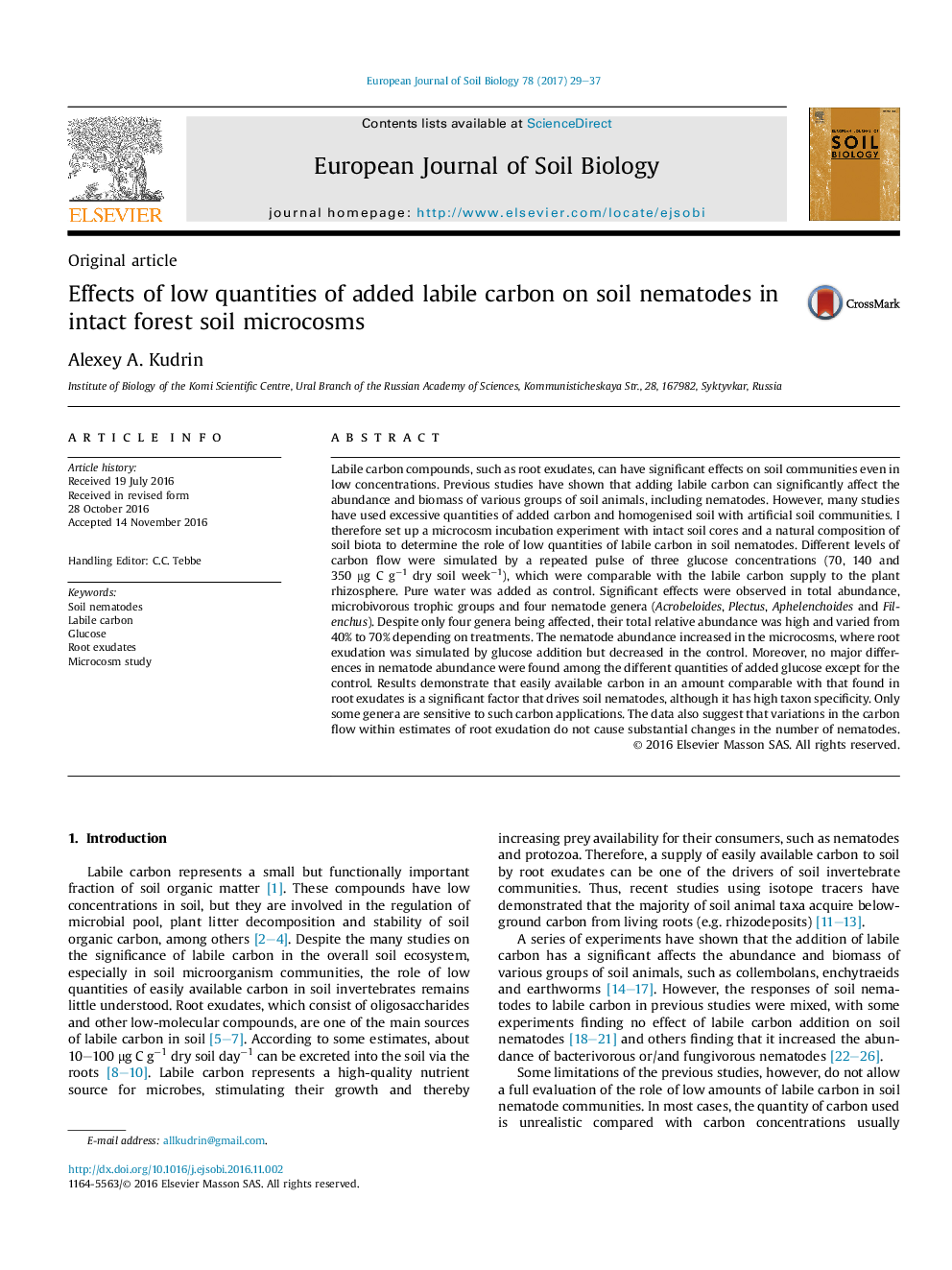| Article ID | Journal | Published Year | Pages | File Type |
|---|---|---|---|---|
| 5744234 | European Journal of Soil Biology | 2017 | 9 Pages |
Abstract
Labile carbon compounds, such as root exudates, can have significant effects on soil communities even in low concentrations. Previous studies have shown that adding labile carbon can significantly affect the abundance and biomass of various groups of soil animals, including nematodes. However, many studies have used excessive quantities of added carbon and homogenised soil with artificial soil communities. I therefore set up a microcosm incubation experiment with intact soil cores and a natural composition of soil biota to determine the role of low quantities of labile carbon in soil nematodes. Different levels of carbon flow were simulated by a repeated pulse of three glucose concentrations (70, 140 and 350 μg C gâ1 dry soil weekâ1), which were comparable with the labile carbon supply to the plant rhizosphere. Pure water was added as control. Significant effects were observed in total abundance, microbivorous trophic groups and four nematode genera (Acrobeloides, Plectus, Aphelenchoides and Filenchus). Despite only four genera being affected, their total relative abundance was high and varied from 40% to 70% depending on treatments. The nematode abundance increased in the microcosms, where root exudation was simulated by glucose addition but decreased in the control. Moreover, no major differences in nematode abundance were found among the different quantities of added glucose except for the control. Results demonstrate that easily available carbon in an amount comparable with that found in root exudates is a significant factor that drives soil nematodes, although it has high taxon specificity. Only some genera are sensitive to such carbon applications. The data also suggest that variations in the carbon flow within estimates of root exudation do not cause substantial changes in the number of nematodes.
Related Topics
Life Sciences
Agricultural and Biological Sciences
Soil Science
Authors
Alexey A. Kudrin,
